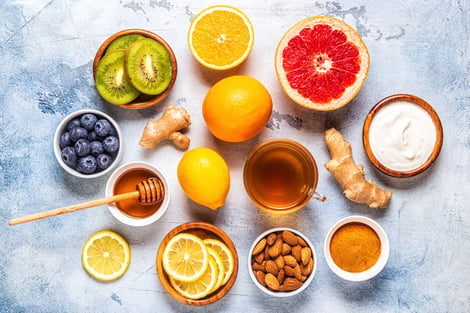 As the weather turns colder and we spend more time indoors, viruses will become more active among the population. Healthy eating can help you boost your immunity. Here are five of the top choices for fighting colds and flu with food.
As the weather turns colder and we spend more time indoors, viruses will become more active among the population. Healthy eating can help you boost your immunity. Here are five of the top choices for fighting colds and flu with food.
Citrus Fruits
Oranges, clementines, lemons, and grapefruits are all excellent sources of vitamin C, an antioxidant that helps protect immune cells from oxidative stress during the early stages of an immune response. Research has shown that a deficiency of vitamin C can result in impaired immunity and a greater susceptibility to infection.
Fatty Fish
Fatty fish, such as sockeye salmon and rainbow trout, are often great sources of Vitamin D, a nutrient that plays a role in innate and adaptive immune responses. One study found that vitamin D supplementation resulted in a 42% decrease in the incidence of influenza infection, while another study revealed individuals with lower serum vitamin D levels were more likely to self-report recent upper respiratory tract infections when compared to individuals with sufficient vitamin D levels.
Nuts, Seeds, and Plant-based Oils
Nuts, seeds, and plant-based oils are high in vitamin E, an antioxidant that has been shown to enhance immune response and confer protection against several infectious diseases. These foods are also high in omega-3 fatty acids, which may help strengthen your immune cells, although more research is still needed to fully support these claims.
Sweet Potatoes
Sweet potatoes and other red or orange fruits and vegetables are typically high in vitamin A, which plays a crucial role in the maintenance of the human immune system. Vitamin A supplementation has been shown to have a therapeutic effect on diseases transmitted through the respiratory tract, such as pneumonia. For reference, one sweet potato contains 156% of your daily vitamin A requirements.
Oysters
Three ounces of raw oysters provides 291% of your daily zinc needs. Zinc helps the immune system function properly and also has wound-healing properties. Studies have shown that a zinc deficiency is associated with severe immune dysfunction.
***
Eating the preceding types of foods can help you strengthen your immune system against the annual winter onslaught of colds and flu. If you’d like more help planning a healthy diet, schedule a NIFS nutrition coaching session.
This blog was written by Lindsey Recker, MS, RD, NIFS Registered Dietitian. To learn more about the NIFS bloggers, click here.


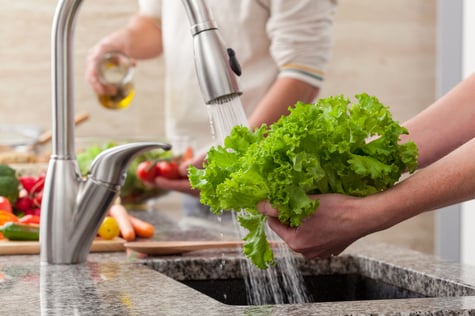 It is estimated that there are almost 48 million cases of foodborne illness/food poisoning in the United States each year (source:
It is estimated that there are almost 48 million cases of foodborne illness/food poisoning in the United States each year (source: 
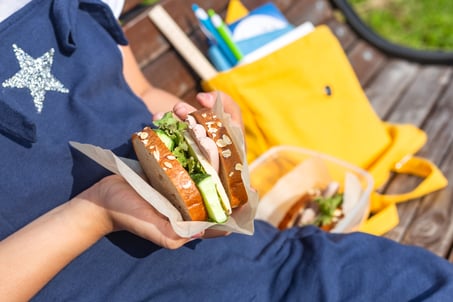 As many of us are confronted with the decision of whether to send our children back to school or continue with online learning, we are faced with many questions that we had never had to ask ourselves before. Breakfast, lunch, and often snacks are mainly consumed during these hours at school, so as we continue to see Indiana trying to return to normal and reopen, we might need to tailor our eating habits to ensure we are not risking unnecessary exposure to COVID-19 when refueling our bodies throughout the day. These ideas also work for adults who are returning to the workplace or have already returned to the workplace.
As many of us are confronted with the decision of whether to send our children back to school or continue with online learning, we are faced with many questions that we had never had to ask ourselves before. Breakfast, lunch, and often snacks are mainly consumed during these hours at school, so as we continue to see Indiana trying to return to normal and reopen, we might need to tailor our eating habits to ensure we are not risking unnecessary exposure to COVID-19 when refueling our bodies throughout the day. These ideas also work for adults who are returning to the workplace or have already returned to the workplace. During these unprecedented times of self- and mandated quarantines and stay-at-home orders, it can be easy to slip into a negative mindset accompanied by fear of the unknown and worry about how you are going to get through this. Self-quarantine does not have to be void of self-improvement. Social media is drenched with ideas and strategies to keep up your physical fitness at home with a million bodyweight workouts and DIY fitness equipment ideas. I’m partial to the elite content that the NIFS pros are providing daily, obviously, but there is no shortage of methods out there to keep moving at home. But what about emotional and mental fitness, and how to continue the work on YOU that makes us strong individuals inside and out?
During these unprecedented times of self- and mandated quarantines and stay-at-home orders, it can be easy to slip into a negative mindset accompanied by fear of the unknown and worry about how you are going to get through this. Self-quarantine does not have to be void of self-improvement. Social media is drenched with ideas and strategies to keep up your physical fitness at home with a million bodyweight workouts and DIY fitness equipment ideas. I’m partial to the elite content that the NIFS pros are providing daily, obviously, but there is no shortage of methods out there to keep moving at home. But what about emotional and mental fitness, and how to continue the work on YOU that makes us strong individuals inside and out?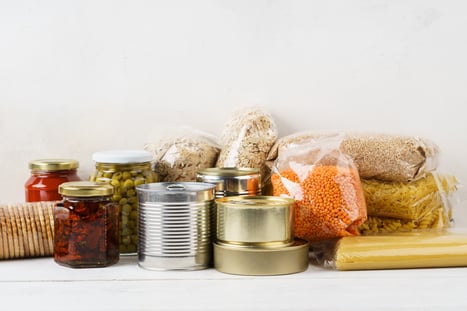 1. Stock up on nutritious foods from all food groups.
1. Stock up on nutritious foods from all food groups. 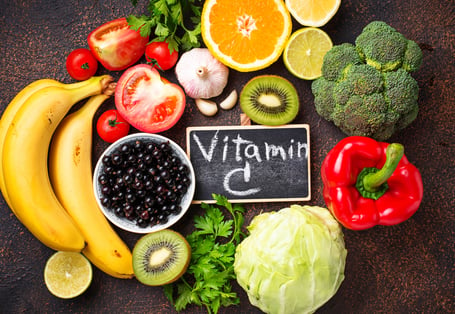 During cold and flu season, we try to do all we can to prevent illness or speed up how fast we recover from illness. One such strategy many employ is the use of Vitamin C for a natural remedy. Several products are marketed as immune system boosters because they contain large amounts of Vitamin C. Do these products really work? We set out to investigate!
During cold and flu season, we try to do all we can to prevent illness or speed up how fast we recover from illness. One such strategy many employ is the use of Vitamin C for a natural remedy. Several products are marketed as immune system boosters because they contain large amounts of Vitamin C. Do these products really work? We set out to investigate!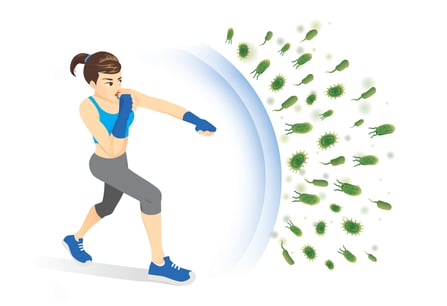 Have you ever noticed that during the cold and flu season, some people just don’t get sick no matter what? Or maybe you have wondered why after being exposed to the same virus, one person gets sick while the other doesn’t.
Have you ever noticed that during the cold and flu season, some people just don’t get sick no matter what? Or maybe you have wondered why after being exposed to the same virus, one person gets sick while the other doesn’t.